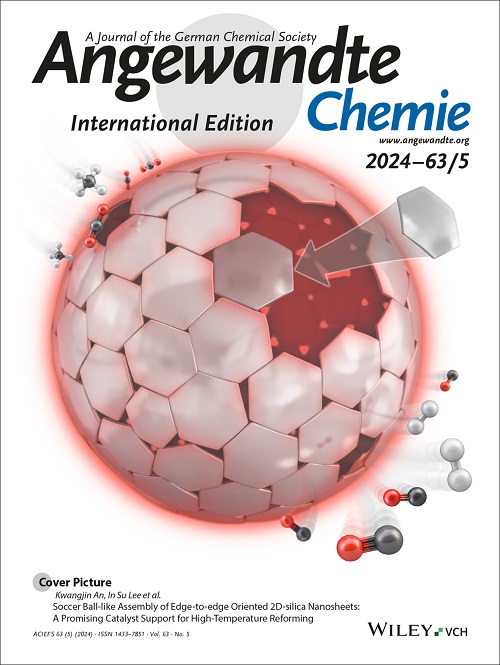Boron-Fluoride Dual-atom Synergistic Regulated Interface Coating Enables Stable Zn-metal Anodes
IF 16.1
1区 化学
Q1 CHEMISTRY, MULTIDISCIPLINARY
引用次数: 0
Abstract
Aqueous Zinc-based batteries provide promising opportunities for next-generation rechargeable batteries. Nevertheless, Zn anode encounters severe challenges, such as Zn dendrite formation, surface corrosion, and hydrogen evolution reaction (HER). Here, we report a strategy to spontaneously construct a boron-fluoride dual-atom regulated SEI (ZnBOF), which involves the formation of a B-compound coating through etching process and followed by an in-situ F substitution during the initial electrochemical cycling. The ZnBOF/Zn anode benefit preferential deposition of Zn2+ along the (002) plane without Zn dendrite, and the side reaction including by-product and HER are dramatically suppressed. A combination of characterization methods, such as X-ray absorption spectroscopy, show that the B-containing passivation layer facilitates the transport of Zn2+ and mitigates water-related side reactions, and the F atoms serve as zincophilic sites that enhance the transfer kinetics of Zn2+. As expected, the well-designed ZnBOF/Zn anode exhibits ultra-stable Zn plating/stripping for 5000 h at 2 mA cm-2. The assembled ZnBOF/Zn||MnO2 batteries show impressive cycling stability, remaining 96.2% of the initial capacity (234.3 mAh g-1) after 1700 cycles at 1.0 A g-1. Therefore, this work reveals a dual-atom synergistic regulated strategy to fabricate a robust SEI for Zn anode, which contributes to the development of aqueous zinc-based batteries.求助全文
约1分钟内获得全文
求助全文
来源期刊
CiteScore
26.60
自引率
6.60%
发文量
3549
审稿时长
1.5 months
期刊介绍:
Angewandte Chemie, a journal of the German Chemical Society (GDCh), maintains a leading position among scholarly journals in general chemistry with an impressive Impact Factor of 16.6 (2022 Journal Citation Reports, Clarivate, 2023). Published weekly in a reader-friendly format, it features new articles almost every day. Established in 1887, Angewandte Chemie is a prominent chemistry journal, offering a dynamic blend of Review-type articles, Highlights, Communications, and Research Articles on a weekly basis, making it unique in the field.

 求助内容:
求助内容: 应助结果提醒方式:
应助结果提醒方式:


